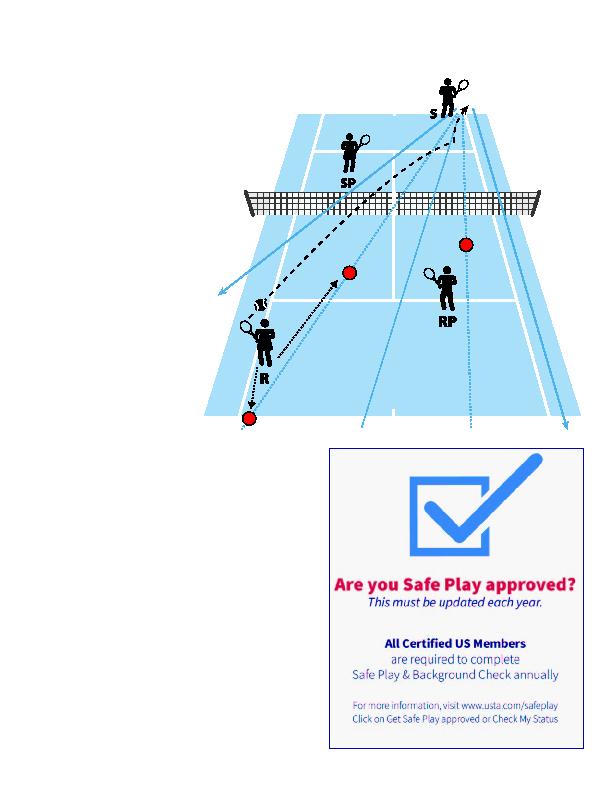
line running between the two partners, divides the area where the
ball will be returned. This is for the purpose of locating the homes.
There are many occasions when a player should and will cross into
the other half to hit the ball.
serve. S/he plans to hit a crosscourt return, the path shown
by the wide black dotted line. S/he has the choice to re-
cover forward to a home at net or move back to the base-
line home. Since time is limited s/he needs to move to one
of these two homes before s/he knows the outcome of
his/her shot.
Partner, will recover to a home closer to the net
once the return has passed the Server's Partner.
crucial in doubles. There are more oppor-
tunities to put away the ball from closer to
the net, while it's easier to cover a lob from
farther back. I teach a staggered-offense
system, which divides the responsibilities
between the two players, as shown here.
In general, the home for the player directly
across from the ball is about halfway be-
tween the net and the service line. The
player diagonal to the ball is staggered be-
hind his/her partner, a couple of steps in
from the service line.
ing students, it often requires a reminder by the coach to move back after hitting
a ball inside the baseline. The tendency to creep in as a point progresses is
often a lack of understanding about recovery and the correct home.
As s/he prepares to return the serve, the Receiver's starting location may be
well in or back from the baseline, depending on the Server's tendencies and
how the Receiver likes to return. If the Receiver is starting from a location inside
the baseline, s/he needs to recover forward to net or back to the baseline home
immediately after hitting the return.
Likewise, if the service motion takes the Server into the court, unless s/he's
serving and volleying, it's important to immediately recover to the baseline home,
to be ready to respond to a deep return, or to run forward if the return lands
short.
played. How we teach our lessons is changing to embrace this principle. While
we can't focus on everything at once, we want to keep in mind the tactical im-
plications of how we set up our drills. We want students to learn correct targets
and movement patterns, even as we help them improve their technique, mindset
and fitness.
The recovery part of the sending phase is valuable to teach to all players, espe-
cially recreational players who may not have come across it before. The ability
to recover immediately after contacting the ball and knowing exactly where to
move is a tactical skill that can fundamentally improve your players' games.